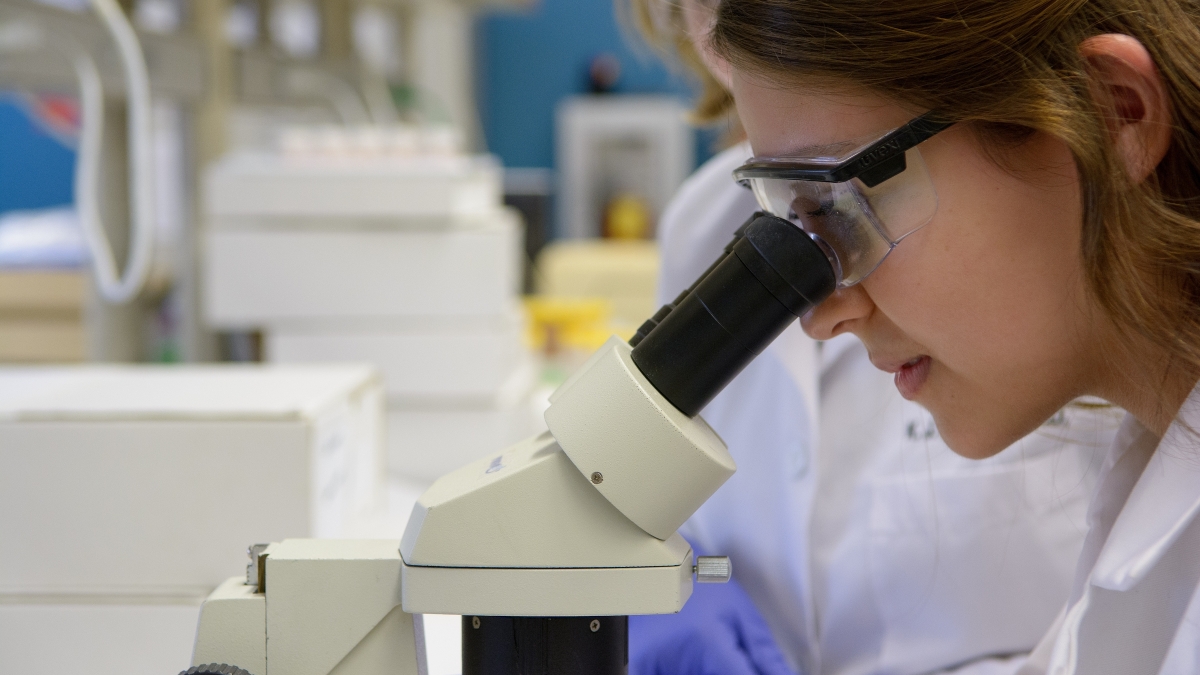Last year, the New York Times reported that China had begun withholding samples of a strain of bird flu virus from U.S. health authorities. The news was of particular import to Arizona State University College of Health Solutions Associate Professor Matthew Scotch, whose research into virus evolution helps to inform public health officials of potential pandemic threats.
An expert in phylodynamics, Scotch looks at viruses to see how they’re related to one another from an ancestral standpoint. In an ongoing project funded by the National Institutes of Health, he is working to develop a bioinformatics system that can be used by health agencies like the Centers for Disease Control to implement models of phyloydynamics without having to be experts themselves.
“It’s sort of like a pipeline that gets all the data necessary, integrates them and does the modeling for them, then visually presents the results in a way we think will allow them to make meaningful decisions about what to do if public health action is needed,” Scotch said.
However, the lack of up-to-date virus samples puts such efforts in jeopardy. Scotch talked with ASU Now about why and how concerned we should be.
Matthew Scotch
Question: Why is the threat of bird flu especially concerning at this point in time?
Answer: There have been many instances throughout history of different types of flu that have caused pandemics in humans. The swine virus, for example. Only somewhat recently, though, has there been this growth in the amount of avian viruses that have potential for causing pandemics. Flu viruses are always evolving. The complexity with avian flu is that you have different types of viruses that are circulating in both domestic and wild birds that causes what we call antigenic shiftAn antigenic shift is the process by which two or more different strains of a virus, or strains of two or more different viruses, combine to form a new subtype having a mixture of the surface antigens of the two or more original strains., basically a mixing of viruses that creates new forms of the virus that we haven’t seen before. That can obviously catch people off guard and cause big problems.
Q: What are the potential consequences of China’s refusal to share fresh pathogen samples?
A: As researchers, we rely on publicly available data that is well annotated so that we can incorporate that into our models and get the most up-to-date information about what’s going on with these viruses. If the last sample of a virus you have is from more than a few years ago, that’s really outdated. Especially with H7N9, a bird flu strain that started in 2013 as a low pathogenic virus but has recently evolved into a highly pathogenic virus, meaning it now has the ability to kill its host. That shows that the virus is not sitting still, so we need to be monitoring it so we know what are the necessary changes needed for the virus to evolve into a strain capable of spreading from human to human, and at what point it’s at in its evolution. I have no idea when or if it could ever happen but it’s something that we need to monitor very closely, and the fact that we’re not able to monitor it as closely as we want to because China is withholding samples is concerning, because without them, we also can’t develop treatments and vaccines for it.
Q: Has this ever happened before?
A: We’ve seen this before with China, when they withheld samples of SARS and another bird flu strain, H5N1. But it’s hard to say what’s going to happen this time. These viruses are so unpredictable. We know H7N9 has killed about 40 percent of the people it has infected, and most of them had direct contact with poultry, usually through live bird markets. So those are the risk factors we know about. And the fact of that matter is, if we continue to allow live bird markets, more people are going to get sick and that could potentially lead to larger problems.
Q: Do we know why the majority of bird flu outbreaks happen in Southeast Asia?
A: It’s likely due to climate: temperature, the type of land, etc. And definitely the abundance of live bird markets and the mixing of those birds with wild birds. When you have a combination of close contact with birds that are kept together in close, confined spaces; a supportive climate; unregulated slaughtering practices; and a mixing of these birds with wild birds — that’s my understanding of why you have it in that specific area. China and other countries are trying to do away with these live bird markets, but it's such a common custom that it’s hard to eliminate all of them. But just because outbreaks tend to start in Southeast Asia doesn’t mean they’re going to stay there, and that’s where the public health concern is. Obviously it’s an area that needs to be continually monitored, which emphasizes the need for real-time data sharing.
Top photo by Charlie Leight/ASU Now
More Health and medicine
ASU team part of nationwide study looking at Type 2 diabetes in youth
Near the end of an interview in which he talked about the work his team will be doing to tackle the rise in Type 2 diabetes among youth, Arizona State University Professor Gabe Shaibi answered why…
Leading the way in wellness: ASU highlighted in The Princeton Review's 2025 Mental Health Services Honor Roll
Being a college student isn’t easy — navigating new routines, people and places can be a challenge, especially if the right support system is not in place. That's why Arizona State University is a…
New Indigenous health dashboard offers robust database for scholars
By Nicole Greason and Kimberly Linn A team at Arizona State University’s College of Health Solutions and American Indian Studies program has created a new tool to aid researchers…

